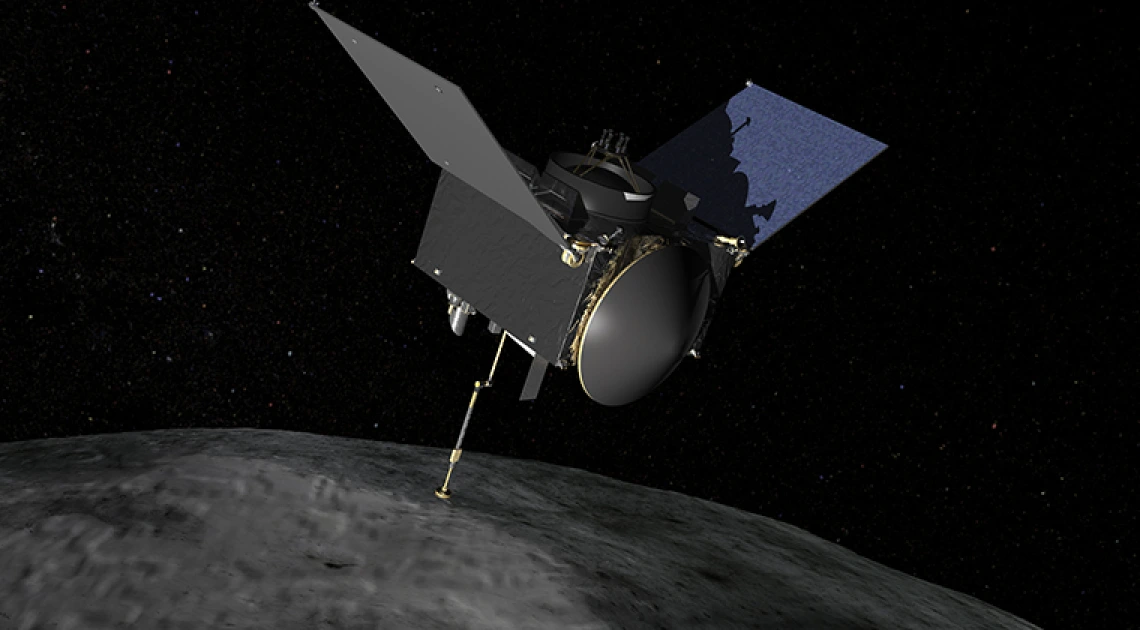Tech Blog: PolyCam Roller Screw Technology Helps OSIRIS-REx Focus on Asteriod Rendezvous

In 2011, NASA announced its decision to select OSIRIS-REx as the third mission in its New Frontiers Program, an initiative to “tackle specific solar system exploration goals identified as top priorities by consensus of the planetary community.” OSIRIS-REx stands for Origins, Spectral Interpretation, Resource Identification, Security - Regolith Explorer. The goal of the OSIRIS-REx asteroid sample return mission is to visit the asteroid Bennu and retrieve a sample of rocks and surface material to return to Earth for examination in the hopes of answering questions about our solar system’s origin and history. The mission is also a precursor to developing planetary defense capabilities to avoid impacts by near-Earth asteroids like Bennu [1].
A major objective of the mission involves detecting, imaging, and mapping Bennu from both long and short ranges. To do so, a team from the University of Arizona developed the OSIRIS-REx Camera Suite (OCAMS), which is made up of three different cameras known as MapCam (a mapping camera), SamCam (the sampling camera), and a magnifying camera called PolyCam [1].
PolyCam functions as the “spyglass to investigate faraway objects in detail – magnifying the sharpness of natural vision by a factor of 5.” [2] To achieve that, Michael Williams, Lead Engineer of spaceflight in the University of Arizona’s Lunar and Planetary Laboratory looked into roller screws, which translate rotary motion into precise linear motion, to meet the demanding accuracy, reliability, and power requirements that the mission demands.
Williams determined that off-the-shelf roller screws could not meet the needs of OSIRIS-REx, leading him to invent the PolyCam Roller Screw (UA13-057). The technology meets the stringent requirements for precision, reliability and low power, which allows the PolyCam “to scrutinize the tiniest rocks and pebbles on the asteroid to ensure they are small enough to fit into the sample head” [2].
Now retired, Williams worked with John Geikler, assistant director of physical sciences licensing at Tech Launch Arizona, to identify characteristics of the PolyCam roller screw – such as fewer parts, minimal lubricant, and lower torque – that not only led to its development for OSIRIS-REx, but also translate into advantages for applications here on Earth. Fewer parts leads to lower manufacturing costs and ease of reassembly. Little or no lubricant translates to less debris and galling – keys to higher reliability. And lower torque enables minimizing power requirements.
Geikler noted, “all those advantages can now enable improved commercial roller screws for industries ranging from aerospace and defense to automation and machine tools.”
OSIRIS-REx successfully launched from Cape Canaveral, Florida on September 8, 2016, and is scheduled to return to Earth with its sample of asteroid Bennu on September 24, 2023.
To learn more about this technology, please visit: http://inventions.arizona.edu/technologies/ua13-057_non-recirculating-roller-screw
To learn more about OSIRIS-REx, please visit: http://www.asteroidmission.org/(link is external)
To learn more about other space-related technologies from Tech Launch Arizona, please visit:
- Spherical Balloon Reflectors for Space Based Applications (UA15-195)
- Control of Boundary Layer Transition for Hypersonic Flight (UA16-059)
References:
[1]OSIRIS-REx Mission. (n.d.). Retrieved September 20, 2016, from http://www.asteroidmission.org/(link is external)
[2] Lauretta, D. (2014, January 11). OCAMS - The Eyes of OSIRIS-REx [Web log post]. Retrieved September 20, 2016, from https://dslauretta.com/2014/01/11/ocams-the-eyes-of-osiris-rex/ (link is external)

